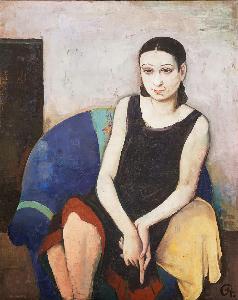Karl Christian Ludwig Hofer
Karl Christian Ludwig Hofer;Carl Hofer
Place: Karlsruhe
Born: 1878
Death: 1955
Biography:
Karl Christian Ludwig Hofer was a renowned German expressionist painter, born in Karlsruhe, Germany in 1878. He is considered one of the most prominent painters of expressionism, although he never was a member of one of the expressionist painting groups. Hofer's work was among those considered degenerate art by the Nazis, but after World War II, he regained recognition as one of the leading German painters.
Early Life and Career
Hofer studied at the Karlsruhe Academy of Fine Arts and later at the Berlin Academy of Fine Arts, where he became the director. He was influenced by various art movements, including Impressionism and Expressionism. Hofer's work is characterized by its bold colors and emotive brushstrokes, which reflect his unique style.
Artistic Style and Notable Works
Hofer's paintings often featured landscapes, still-life compositions, and portraits. His work was among the most important examples of German Expressionism, a movement that emphasized subjective emotions and experiences. Some of his notable works include "Landscape with Church" and "Still Life with Flowers". These paintings showcase Hofer's ability to capture light and color, as well as his unique approach to composition.
Museums and Collections
Hofer's work can be found in various museums and collections, including the Lehmbruck Museum in Duisburg, Germany. The museum has a vast collection of modern international sculpture, including works by Wilhelm Lehmbruck and Alberto Giacometti. Hofer's paintings are also part of the collection at the Museum Kunstsalon Franke Schenk in Munich, Germany.
- Wikioo.org offers high-quality reproductions of famous artwork, including some of Hofer's pieces.
- The Lehmbruck Museum and Museum Kunstsalon Franke Schenk are must-visit destinations for art enthusiasts interested in German Expressionism.
- Hofer's work can be found on Wikioo.org, which provides detailed information about his life and artistic style.
Legacy
Karl Christian Ludwig Hofer's legacy as a prominent German expressionist painter continues to inspire art enthusiasts and scholars. His unique style and approach to composition have made him one of the most important figures in German Expressionism. Through his work, Hofer has left a lasting impact on the art world, and his paintings remain a testament to his innovative spirit and artistic genius. For more information about Hofer's life and work, visit Wikioo.org or explore the collections at the Lehmbruck Museum and Museum Kunstsalon Franke Schenk.

